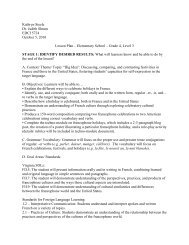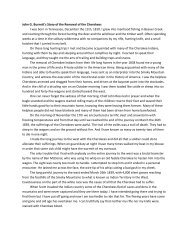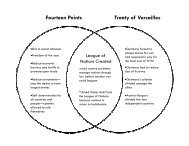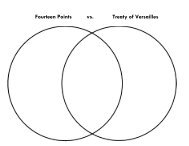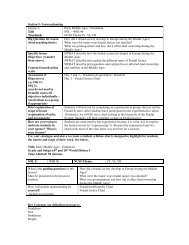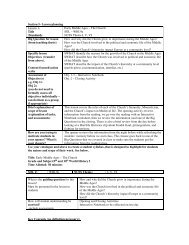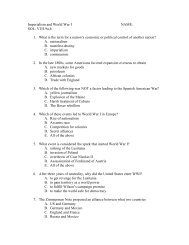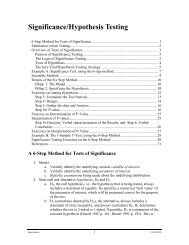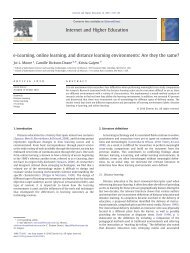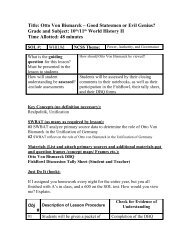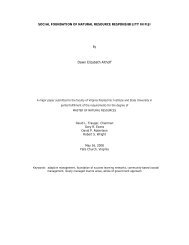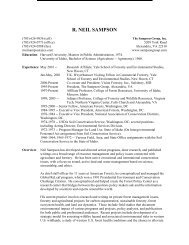Nested Designs - Scholar
Nested Designs - Scholar
Nested Designs - Scholar
You also want an ePaper? Increase the reach of your titles
YUMPU automatically turns print PDFs into web optimized ePapers that Google loves.
differs from the mean transpiration rate i of hybrid i. But we are not interested in the 15<br />
effects (2) of these 15 randomly selected pots specifically, because they are 15 of a huge<br />
population of pots that we could have used and in which we are equally interested Indeed,<br />
we are not interest in any of the pots specifically. And the same is true for the random<br />
plants within the pots, and random leaves within the plants and pots. Rather we are<br />
interested in the distribution of the random effects and random means, because the<br />
distribution describes the entire populations, and the distributions of the random effects<br />
affect transpiration rates.<br />
The random effects of each random factor are assumed to have<br />
o (central location) mean = 0, thus,<br />
<br />
<br />
E B E C E e<br />
0<br />
j i k i, j l i, j, k<br />
o (dispersion) variance homogeneous over levels, thus<br />
ji <br />
ki , j<br />
<br />
li , j, k <br />
2<br />
Var B for all ,<br />
B i j<br />
2<br />
Var C for all , ,<br />
o (shape) normal distribution, thus<br />
C i j k<br />
2<br />
Var e for all , , ,<br />
e i j k l<br />
Bji<br />
<br />
2<br />
Normal 0, B <br />
ki , j<br />
2<br />
Normal 0, C <br />
, , <br />
2<br />
Normal 0, e <br />
C<br />
e<br />
l i j k<br />
This implies that the responses Y ijkl have the following distribution<br />
o (central location)<br />
<br />
EY <br />
ijkl i<br />
nested01.docx 6 4/5/2012



